Installation views
Works
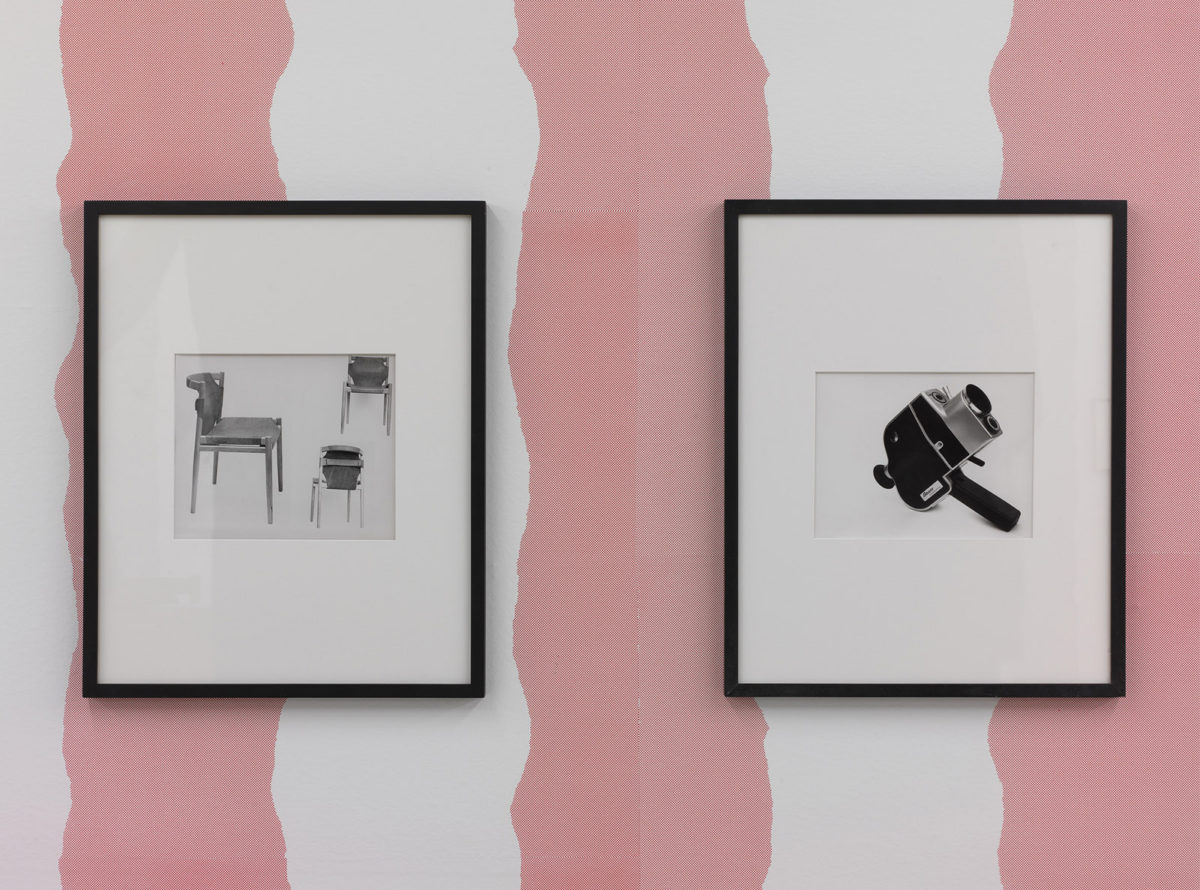
1.

2.
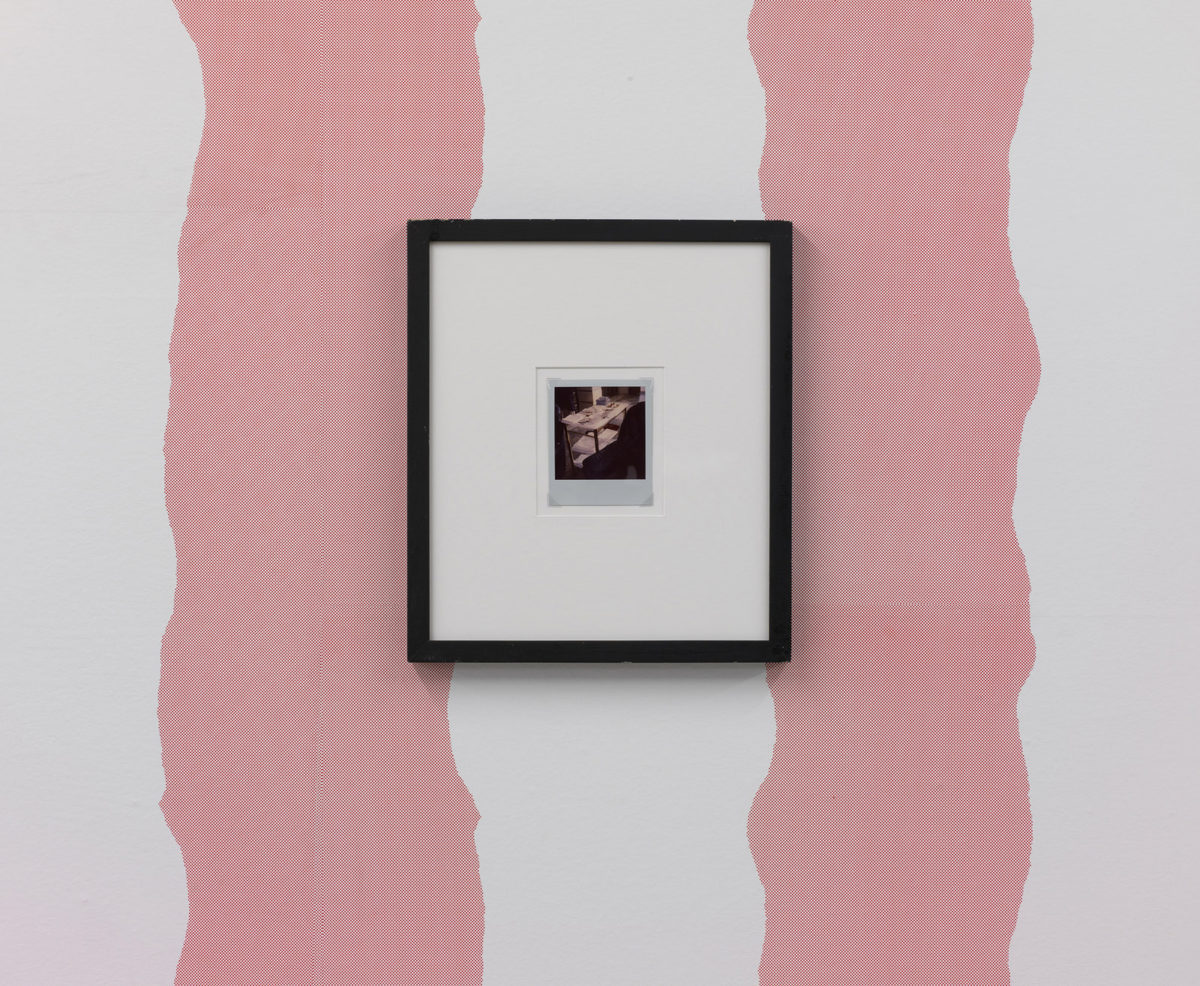
3.

4.

5.
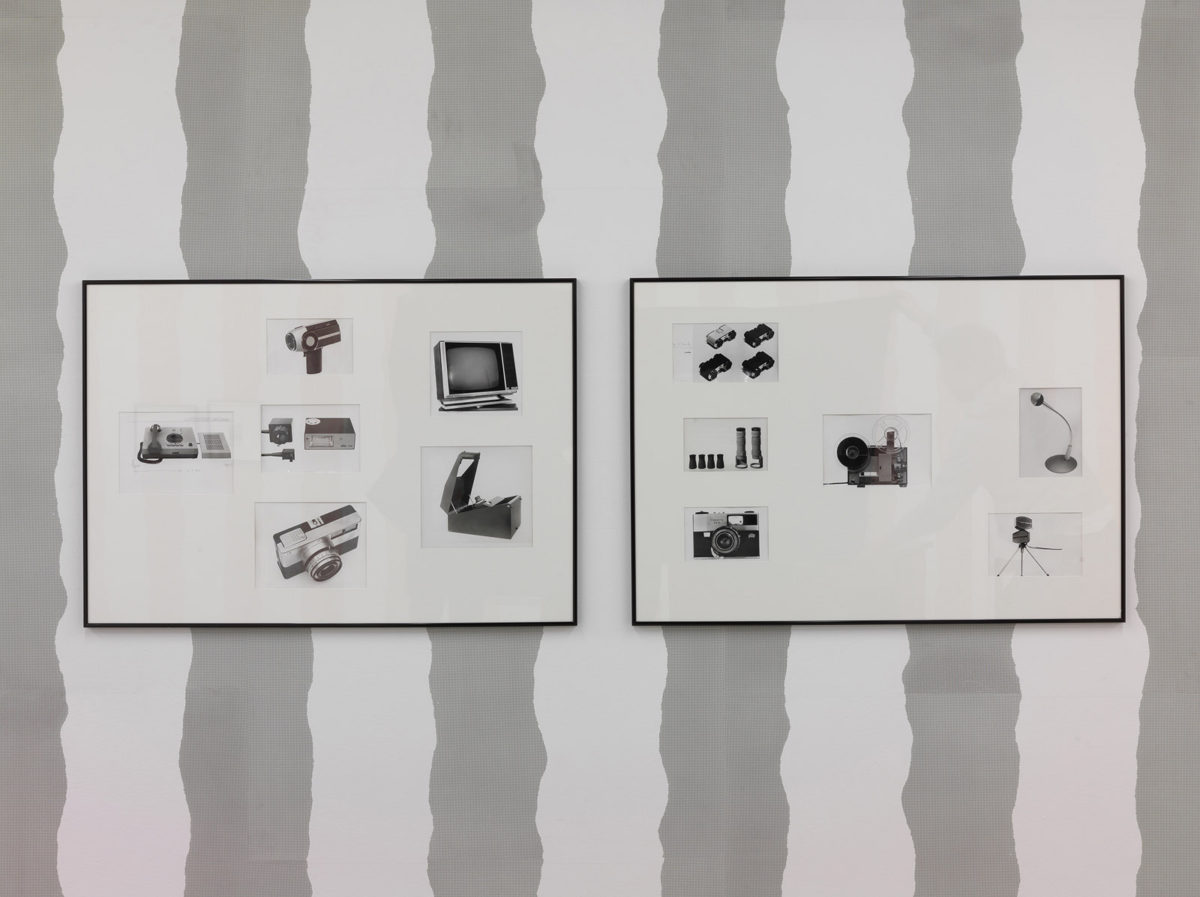
6.
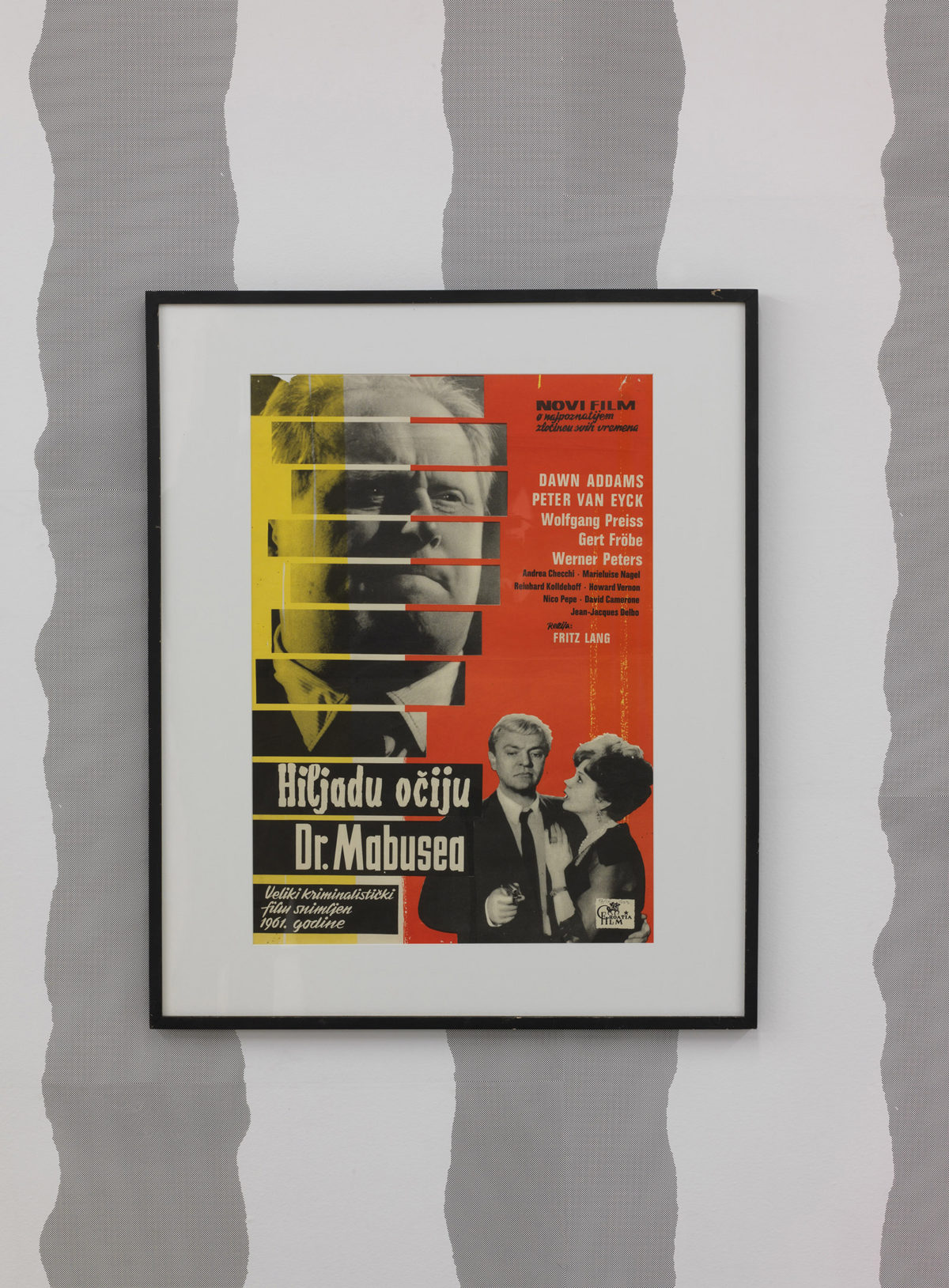
7.
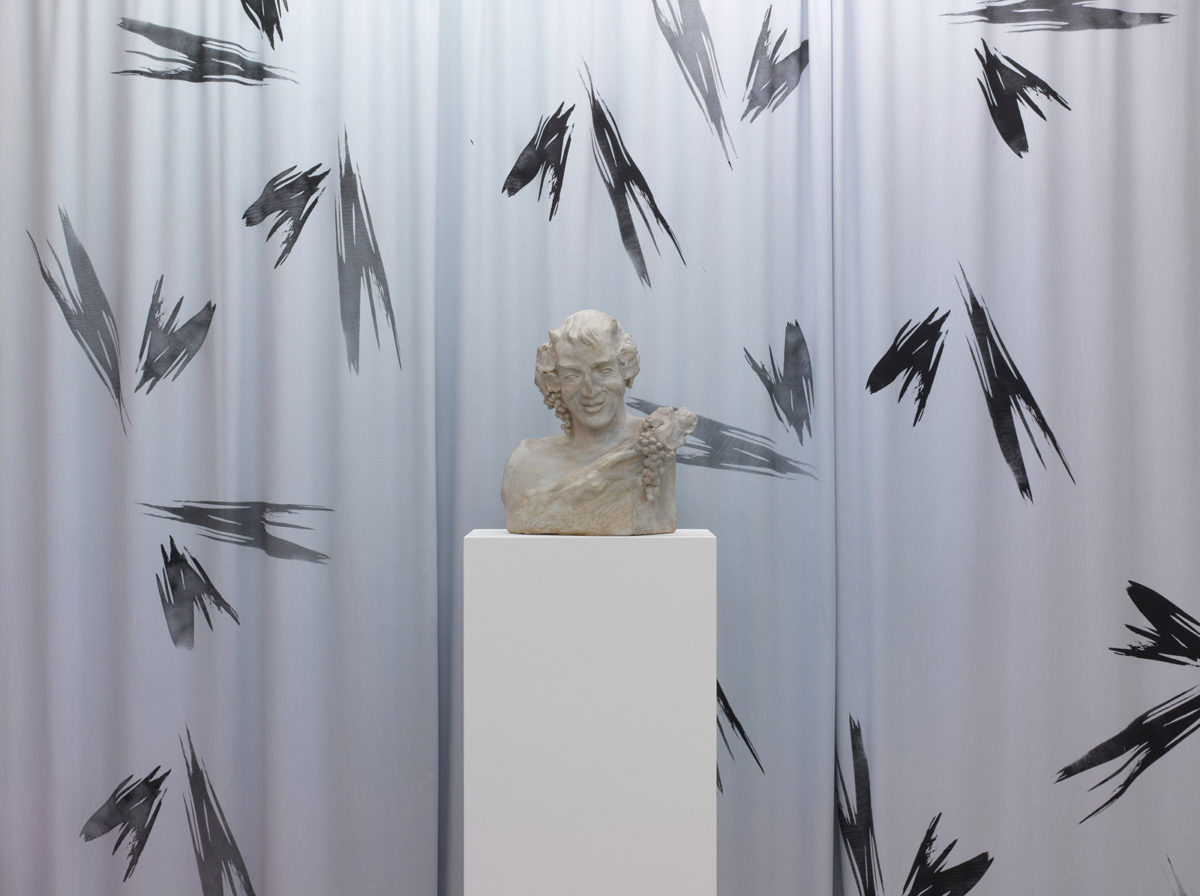
8.

9.
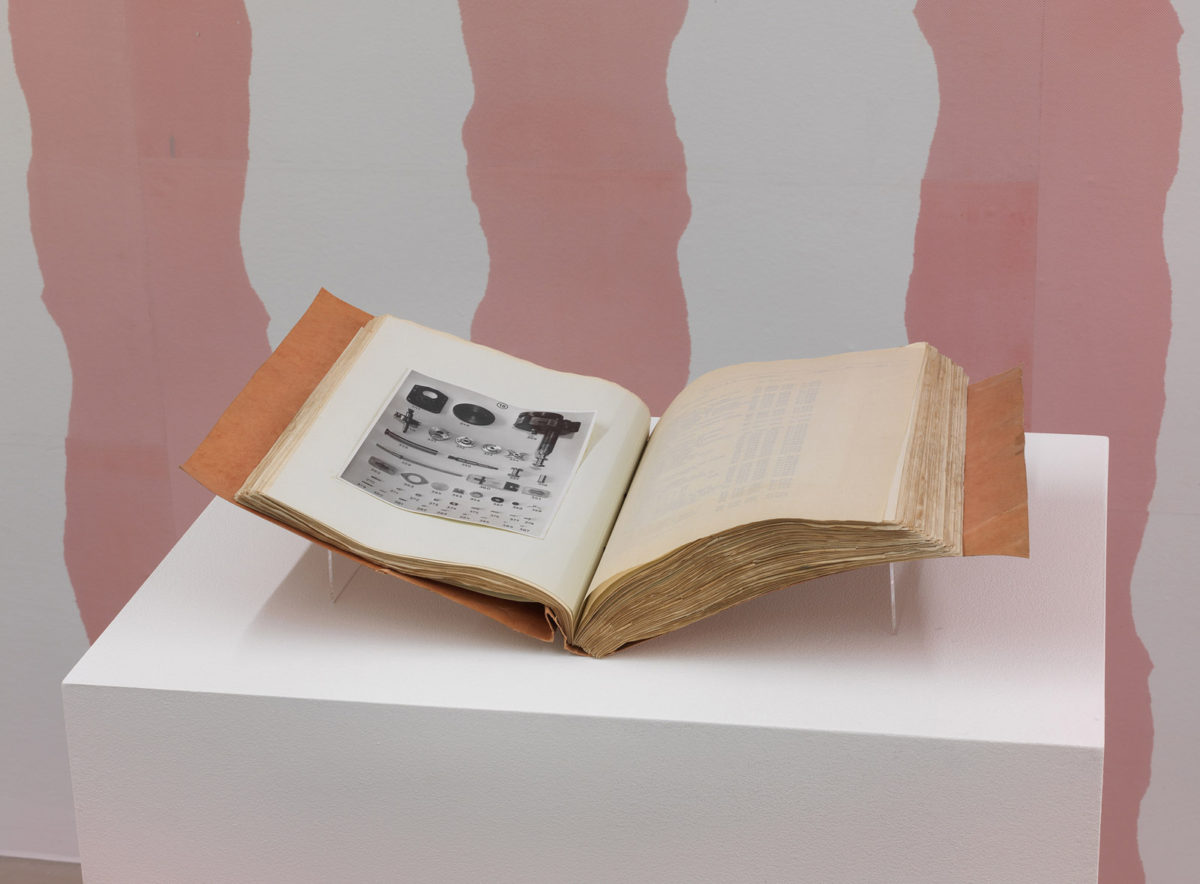
10.

11.
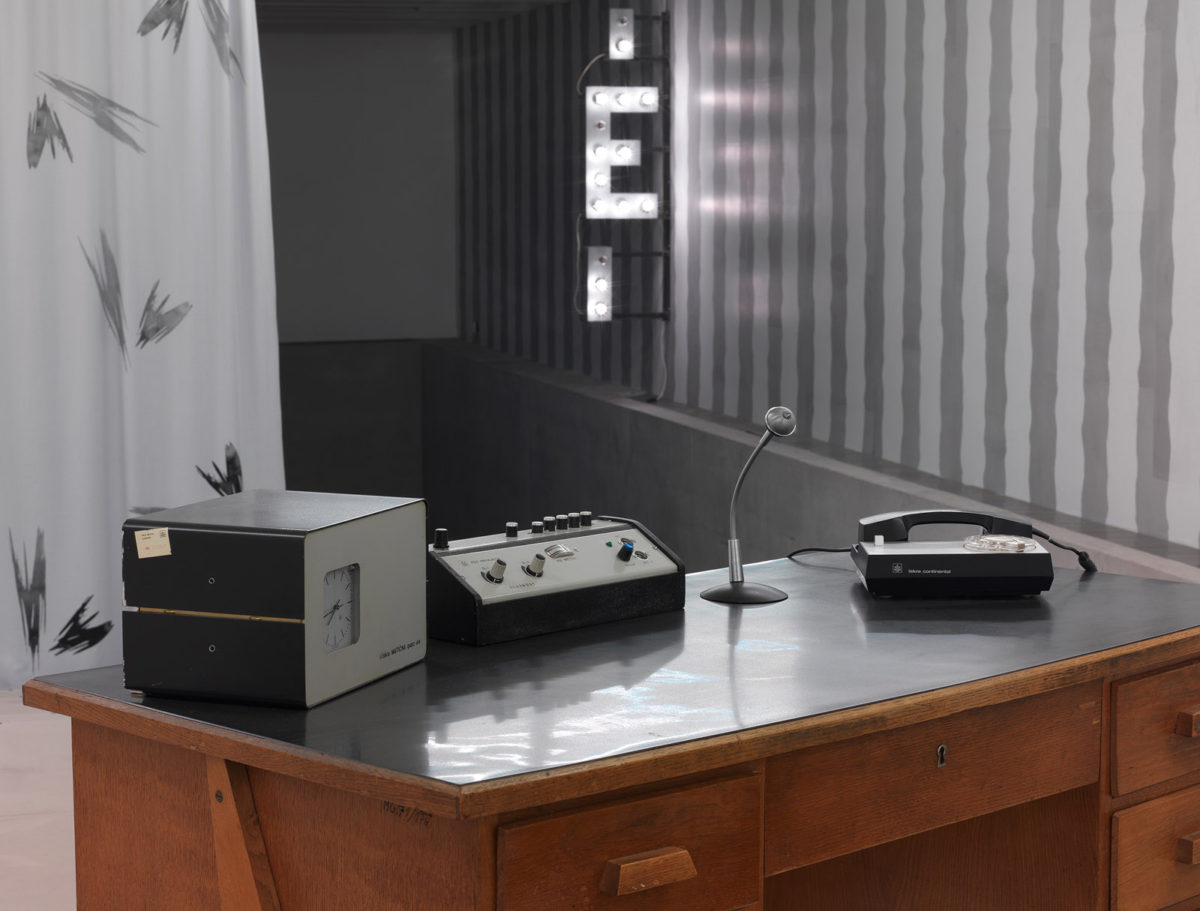
12.
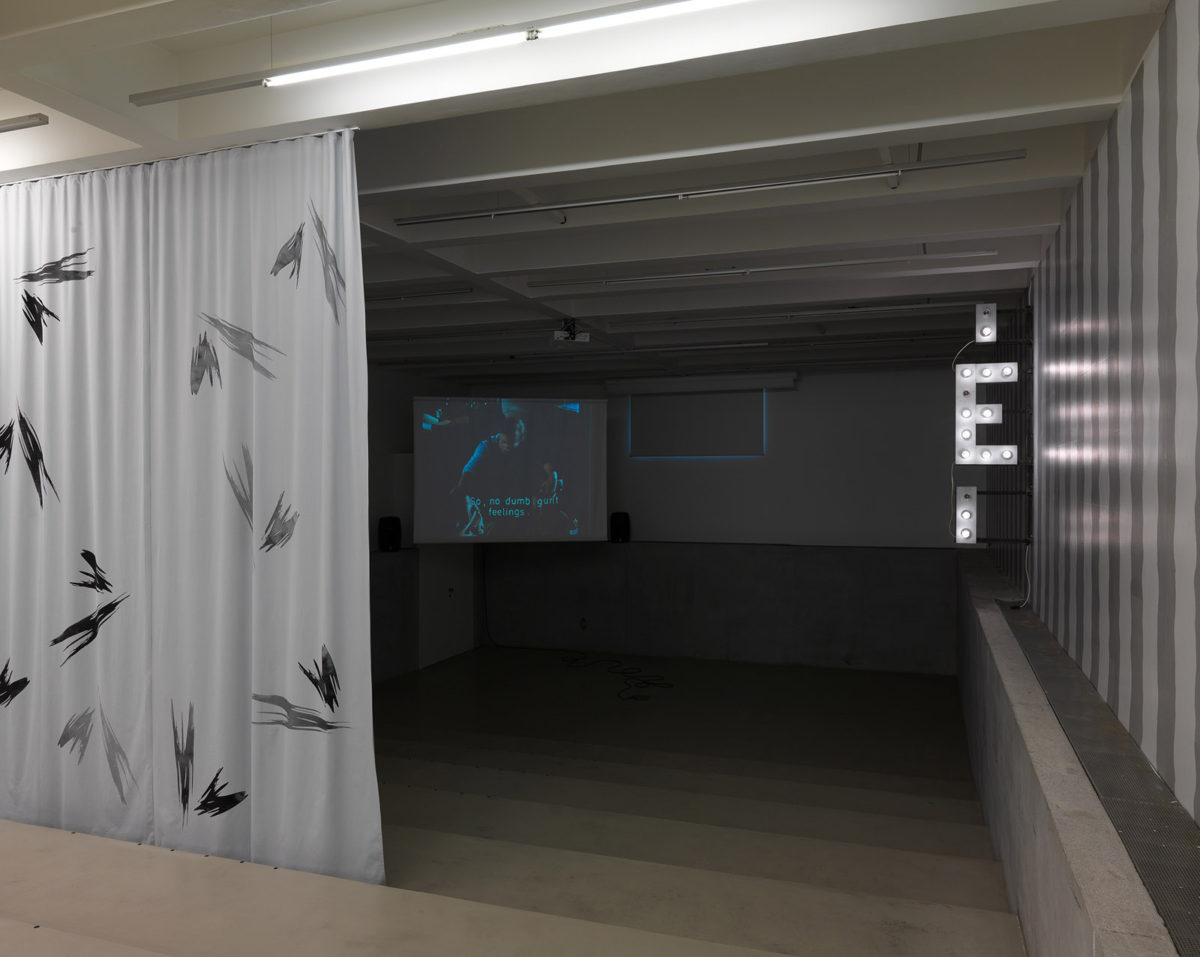
13.
Text
The Thosand Eyes, produced for the 31st Biennial of Graphic Arts (Ljubljana) takes as its starting point the six-month period the German filmmaker Fritz Lang spent billeted to the Slovenian town of Ljutomer whilst on Austrian military service in 1915. The project draws on research into both Lang’s artistic production, his self-production through his meticulously scripted biography, and his concern with the capacity of objects to structure relationships made legible through his obsessive engagement with production design. The installation incorporates a self-portrait in the guise of Bacchus, one of the four sculptures that Lang is known to have produced and all of which remained in Slovenia after his departure – gifts to his host Karol Grossmann, popularly believed to have shot the first reels of Slovenian celluloid. This structured relationship to context, between environment (or set design) and psychological influence, is evoked by a recreated artefact from the production of the 1945 film Scarlet Street, a typically German Expressionist lighting technique translated into the naturalistic, hyper-real idiom of American noir, and the curtain from The Secret Beyond the Door (1947), the division that also reveals the cinematic apparatus. The curtain is refabricated here by distorting a Hans Hartung print, produced in 1957 and included in the Graphic Arts Biennial in 1969, though an anamorphic Cinemascope projection lens. Also included are materials relating to the formation of the Slovenian cinema industry, a political imperative following the end of the Second World War and following Lenin’s compulsion as to the importance of a self-sufficient national cinema as the dominant form of ideological communication.
Amongst the interrelated material, Iskra projector designs, themselves modelled on German Ernemann originals, are juxtaposed with images that trace this international design exchange through the lens of Slovenian cinematographer Janez Kališnik, produced for the first two editions of the Biennial of Industrial Design held in 1963 and 1966, and material related to Karpo Godina’s reciprocally replicated sequences from Lang’s work and fictional speculations on his Slovenian sojourn in the film Artificial Paradise (1989).
The relationship between technical innovation and the projection of influence comes full circle through materials relating to Lang’s Doctor Mabuse cycle of films (1922–1960), the eponymous master criminal whose methods of disguise, replication and psychological influence have become technologically omniscient in Lang’s final rendering, and the closing film of his career, the elegiac The 1000 Eyes of Doctor Mabuse.
With thanks to the Slovenska Kinoteka, Museum of Architecture and Design (Ljubljana), MGLC Ljubljana and the curatorial and technical team of the 31st Biennial. Images: 31 International Biennial of Graphic Arts, Archive MGLC / Jaka Babnik.
Captions
1. Janez Kališnik photographs for BIO 1 catalogue (1964): three views of a leather chair designed by Janez Lajovic, produced by Mizarstvo Šenk, Ljubljana, Yugoslavia, exhibited at BIO 1 (1964)
and
Bauer Super 8 Camera / Kamera Bauer, exhibited at BIO 1
Designed by Bernard Jablonski, produced by Eugen Bauer GmbH, Stuttgart, German Federal Republic.
Archive photographs, Janez Kališnik, 1964
Courtesy of the Museum of Architecture and Design, Ljubljana
and
The Thousand Eyes (red)
Wallpapered silkscreen print on paper
Mike Cooter, 2015
Courtesy the artist and MGLC (Ljubljana)
2. High-angle image of child-minder and children
Photographic contact print (exhibition gelatin silver print)
Karol Grossmann, 1905
and
Building under construction (corrupted)
Photographic contact print (exhibition gelatin silver print)
Karol Grossmann, c. 1909
Both courtesy of the Slovenska Kinoteka
and
The Thousand Eyes (red)
Wallpapered silkscreen print on paper
Mike Cooter, 2015
Courtesy the artist and MGLC (Ljubljana)
3. Production continuity Polaroid from ‘Umetni Raj / Artificial Paradise’
Lang’s make-up/manicure trolley, USA sequence
Archive Polaroid photograph
dir. Karpo Godina, 1990
Courtesy of the Slovenska Kinoteka
and
The Thousand Eyes (red)
Wallpapered silkscreen print on paper
Mike Cooter, 2015
Courtesy the artist and MGLC (Ljubljana)
4. Production still from ‘Umetni Raj / Artificial Paradise’
Doctor Mabuse séance scene duplication set-up with inset continuity image from Lang original, photographic archive print
dir. Karpo Godina, 1990
Courtesy of the Slovenska Kinoteka
and
The Thousand Eyes (red)
Wallpapered silkscreen print on paper
Mike Cooter, 2015
Courtesy the artist and MGLC (Ljubljana)
5. Industrial TV camera, model ‘Sokol / Falcon’, exhibited at BIO 1, 1964
Designed by Davorin Savnik / Danica Petrovič (Iskra ZZA) for Iskra Kranj, Yugoslavia
Archive photograph, Janez Kališnik, 1964
and
Production image from ‘Ne čakaj na maj’
Photographic contact print (exhibition gelatin silver print)
Janez Kališnik (director of photography), 1957
Courtesy of the Slovenska Kinoteka
and
The Thousand Eyes (black)
Wallpapered silkscreen print on paper
Mike Cooter, 2015
Courtesy the artist and MGLC (Ljubljana)
6. Selection of archive photographs taken by Janez Kališnik for catalogue of the Biennial of (Industrial) Design (Ljubljana), specifically editions BIO 1 (1964) to BIO 3 (1968), several with printer’s marks. Articles represented:
D 66 and 1666 microphones with stands
Designed / produced by Akustische-Kino Geräte GMbH, Dunaj/Vienna, Avstrija/Austria
Exhibited at BIO 2, 1966
Dynamic tabletop microphone MD9
Designed by Marko Turk for EAL (client: the Executive Council of the Socialist Republic of Slovenia), Ljubljana, Jugoslavija/Yugoslavia
Exhibited at BIO 1, 1964
8mm film projector
Designed by Davorin Savnik and Boris Selan, produced by ZP Iskra, Jugoslavija/Yugoslavia
Exhibited at BIO 2, 1966
Paxette 35B camera
Designed / produced by Carl Braun Camera-Werk, Nürnberg, German Federal Republic
Exhibited at BIO 2, 1966
Two pocket telescopes and four magnifying glasses
Pocket telescopes designed by Boris Rozman for Tovarna aparatov in instrumentov Vega, Ljubljana, Yugoslavia
Magnifying glasses designed by Juvencij Kalan for Tovarna aparatov in instrumentov Vega, Ljubljana, Yugoslavia
Exhibited at BIO 1, 1964
Hoya 3×3 binoculars
Designed by GK Industrial Design Association for Hoya Glass Co. Ltd, Japan
Exhibited at BIO 2, 1966
Microfilm viewer
Designed by Julijan Miklavčič for Tovarna aparatov in instrumentov Vega, Ljubljana, Jugoslavija/Yugoslavia
Exhibited at BIO 1, 1964
Teleavia Panoramic 195
Designed by M. Fermigier, produced by Sté Fse Frigeavia, France
Exhibited at BIO 2, 1966
Adox Golf IA Photo camera
Designed / produced by Adox Fotowerke, German Federal Republic
Exhibited at Bio 1, 1964
F25 Photoflash
Designed by the Braun development department, Braun AG, Frankfurt/Main, German Federal Republic
Exhibited at BIO 1, 1964
Eumig ‘Viennette’ Super 8 cine-camera
Designed by Acton Bjørn for Eumig, Vienna, Austria
Exhibited at BIO 1, 1964
EVA 66, LF 66, MSN 70 telephones
Designed by Sitte, Walde, produced by Zentrallaboratorium f. Fernmeldetechnik, Berlin, German DR
Exhibited at BIO 2, 1966
and
The Thousand Eyes (black)
Wallpapered silkscreen print on paper
Mike Cooter, 2015
Courtesy the artist and MGLC (Ljubljana)
7. Hiljadu Očiju Dr. Mabuse
Yugoslavian release poster for Die 1000 Augen des Dr. Mabuse (The Thousand Eyes of Dr. Mabuse / Tisoč oči dr. Mabuzeja)
Croatia Film, 1962/3 release, film directed by Fritz Lang, 1960
Courtesy of the Slovenska Kinoteka
and
The Thousand Eyes (black)
Wallpapered silkscreen print on paper
Mike Cooter, 2015
Courtesy the artist and MGLC (Ljubljana)
8. Bust of the god Bacchus (self-portrait)
Paint, terracotta (resin copy)
Fritz Lang, 1915
Courtesy of the Slovenska Kinoteka
and
Snakes and funerals (the secret beyond the door)
Curtain with silkscreen ink, Cinemascope-lensed Hans Hartung lithograph ‘L18’, 1957, exhibited at Biennial 8, 1969
Mike Cooter, 2015
Courtesy the artist and MGLC (Ljubljana)
9. The Thousand Eyes (red)
Wallpapered silkscreen print on paper
Mike Cooter, 2015
Courtesy the artist and MGLC (Ljubljana)
and
Bust of the god Bacchus (self-portrait)
Paint, terracotta (resin copy)
Fritz Lang, 1915
Courtesy of the Slovenska Kinoteka
10. Iskra projector instruction manual – The Maltese Cross (part no. 354)
Book with inlaid photographic prints
Iskra, produced after 1956
Courtesy of the Slovenska Kinoteka
11. Office / writing desk
Designed / produced by Stol, Kamnik (or by Edvard Ravnikar) for Moderna Gallery, Ljubljana, c.1950
and
Leather Chair
Wood, leather
Designed by Janez Lajovic, produced by Mizarstvo Šenk, Ljubljana, Yugoslavia, date c.1960
and
Leather Chair
Wood, leather
Designed by the Stol Kamnik design department (Niko Kralj?), produced by Stol Kamnik, c.1975
All courtesy of the Museum of Architecture and Design, Ljubljana
12. School / factory ‘mother’ clock / Matična ura HM95
Electrical equipment
Designed and produced by Iskra Kranj, Jugoslavija/Yugoslavia, c.1975
Courtesy of the Museum of Architecture and Design, Ljubljana
Overdubbing module for live-translation
Electrical equipment
Designed and produced by Iskra Kranj, Jugoslavija/Yugoslavia, date of production unknown
Courtesy of the Slovenska Kinoteka
Dynamic tabletop microphone MD9
Electrical equipment
Designer: Marko Turk for EAL / the Executive Council of the Socialist Republic of Slovenia, 1963
Courtesy of the Museum of Architecture and Design, Ljubljana
Iskra ATA 40 Continental telephone
Electrical equipment
Designed by Davorin Savnik for Iskra Kranj, Jugoslavija/Yugoslavia, 1972
Courtesy of the Museum of Architecture and Design, Ljubljana
13. Snakes and funerals (the secret beyond the door)
Curtain with silkscreen ink, Cinemascope-lensed Hans Hartung lithograph ‘L18’, 1957, exhibited at Biennial 8, 1969
Mike Cooter, 2015
Courtesy the artist and MGLC (Ljubljana)
and
Scenes from Umetni raj (Artificial Paradise)
Digital projection
Karpo Godina, Slovenia, 1990
and
Scarlet Street
Steel, electronics, phasing unit, incandescent light bulbs
Mike Cooter, 2006/11
Courtesy the artist and the Kirk Collection
